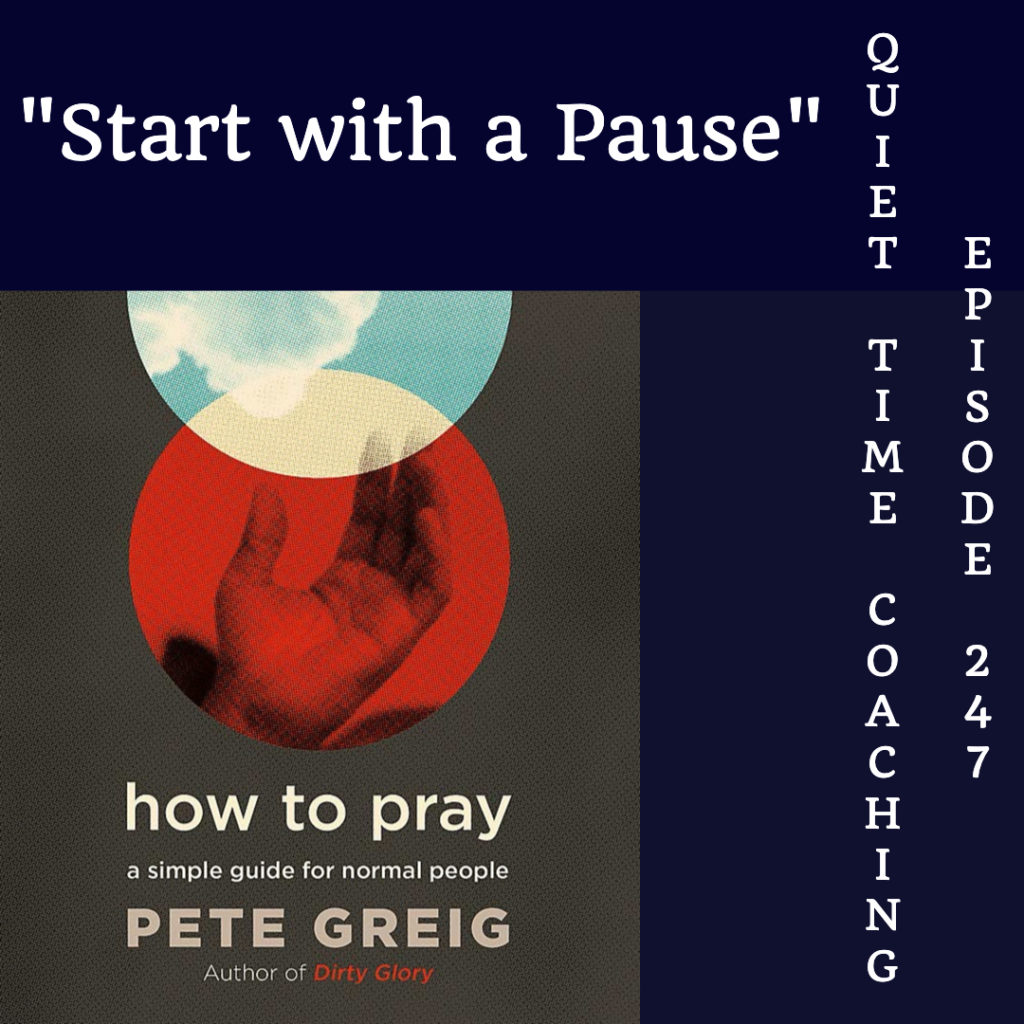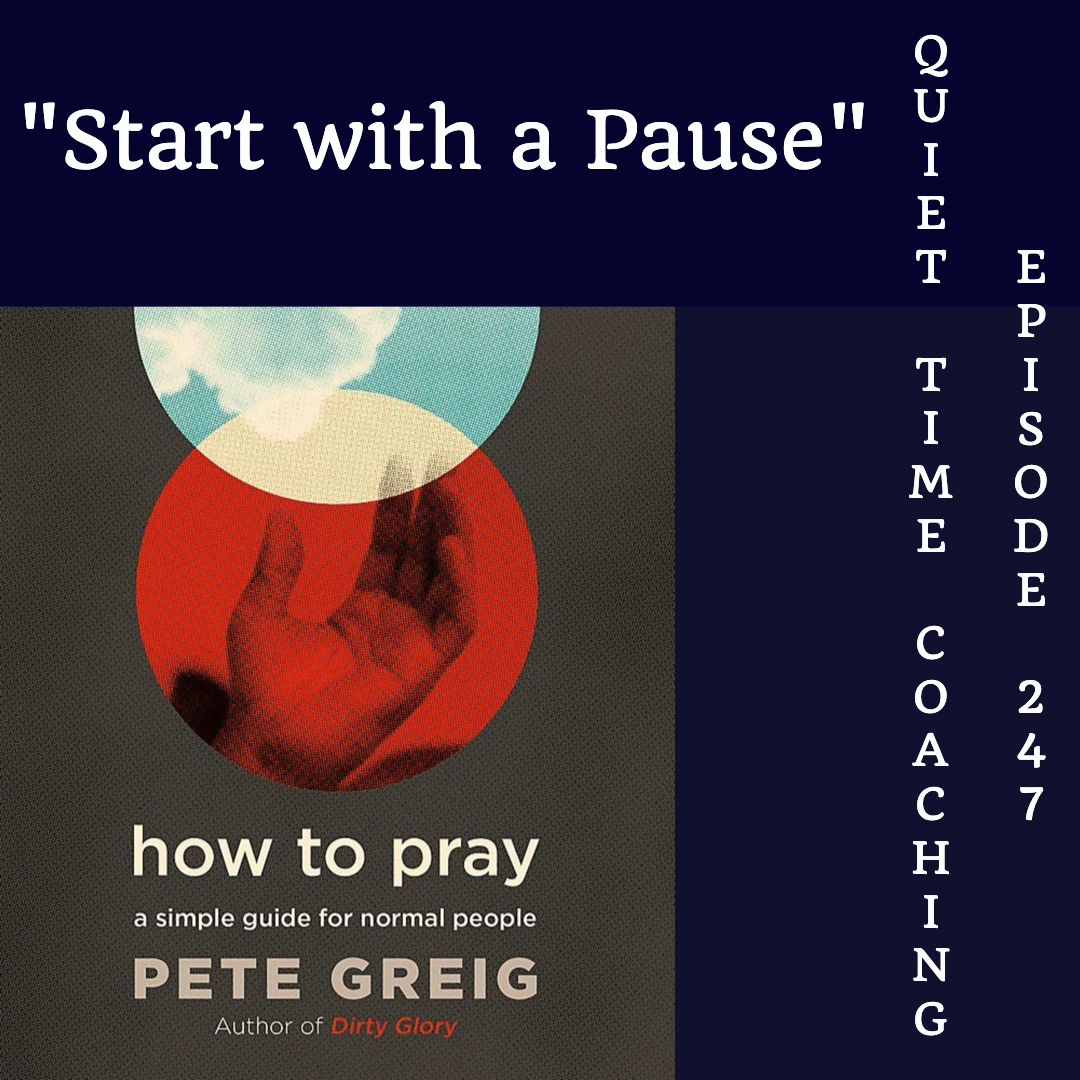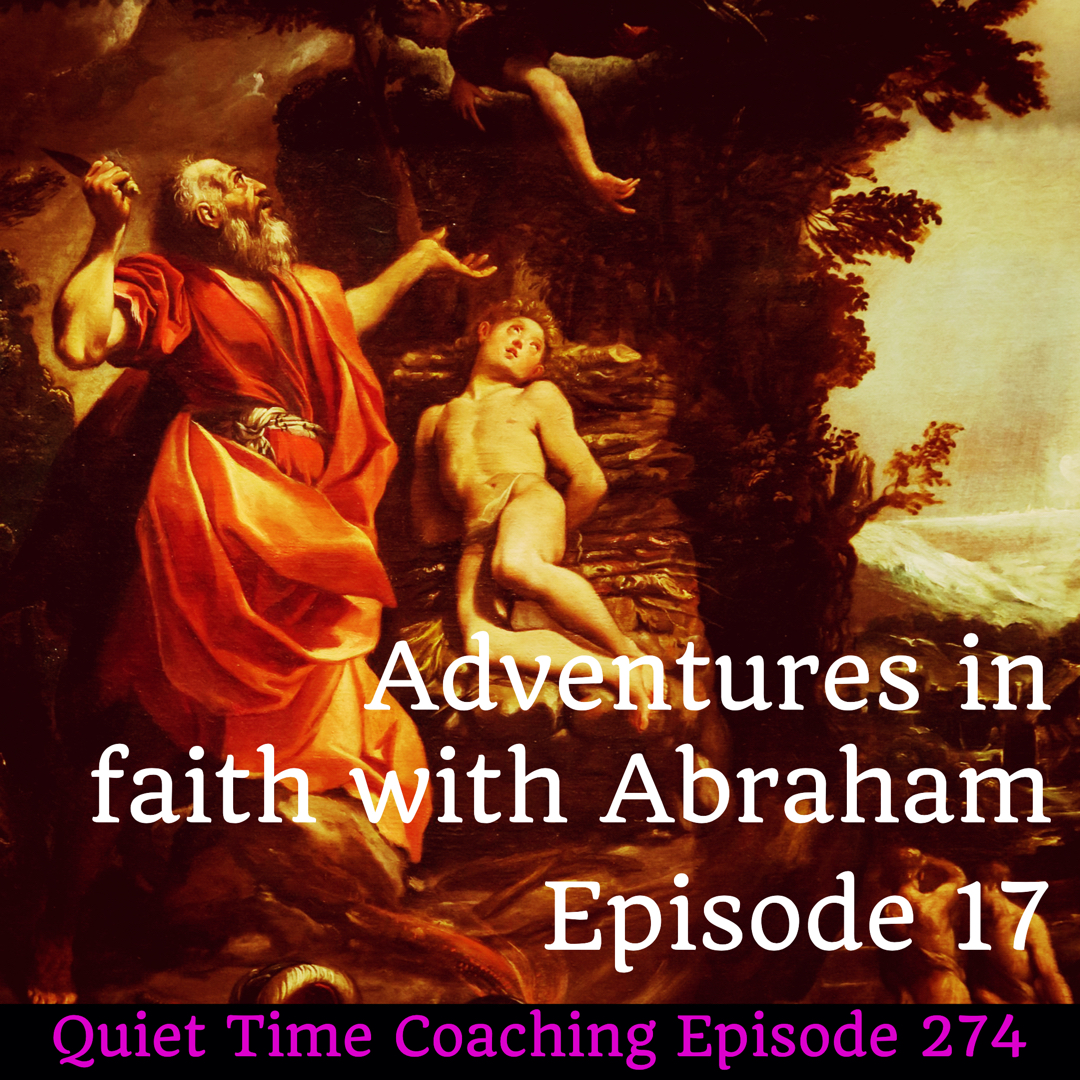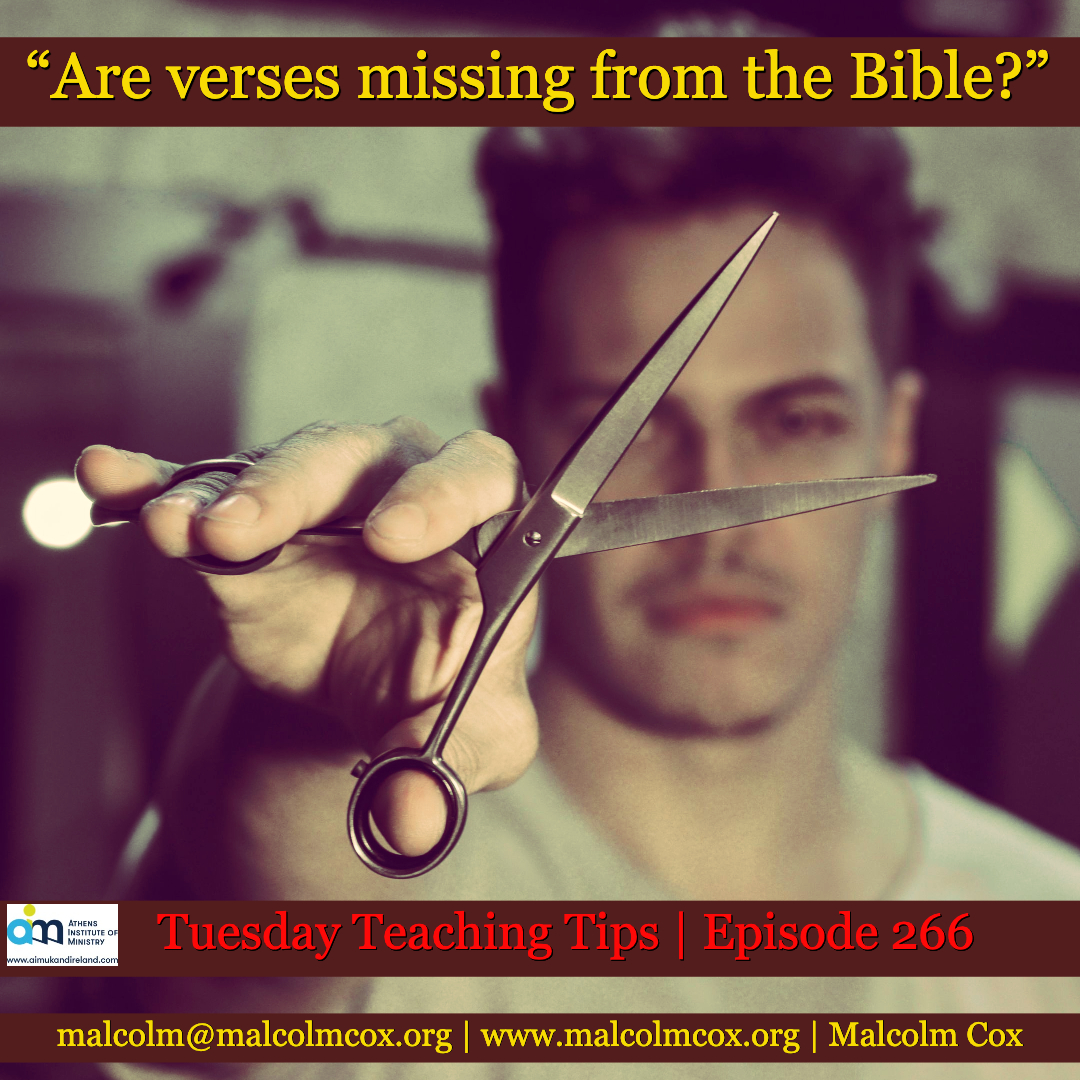Quiet Time Coaching Episode 247

- I am in my third year of participating in the Renovare book club. The first book in this season’s set of four is “How to pray” by Pete Greig.
- Quiet time coaching episodes will focus on his book for the next few weeks. You don’t need to read it to benefit from these recordings, but you might like to get hold of a copy for yourself. I have finished the book and can thoroughly recommend it. A full review of the book will come at a later date in “What we are reading”.
Today we will reflect on the third chapter of the book, “PAUSE Slowing & Centering”.
“To start we must stop. To move forward we must pause. This is the first step in a deeper prayer life: put down your wish-list and wait. Sit quietly. Be still. Become fully present in place and time so that your scattered senses can re-centre themselves on God’s eternal presence. Stillness and silence prepare your mind and prime your heart to pray from a place of greater peace, faith and adoration. In fact, it is in itself an important form of prayer.”
Greig, Pete. How to Pray: A Simple Guide for Normal People (p. 41). John Murray Press. Kindle Edition.
“The best way to start praying, therefore, is actually to stop praying. To pause. To be still. To put down your prayer list and surrender your own personal agenda. To stop talking at God long enough to focus on the wonder of who he actually is. To ‘be still before the Lord and wait patiently for him’.”
Greig, Pete. How to Pray: A Simple Guide for Normal People (p. 42). John Murray Press. Kindle Edition.
Theme scripture: “Be still, and know that I am God;”
(Psalm 46:10 NIV11)
The Latin word for “still” is ‘vacate’. In other words, it’s about stepping out of the way. How will we hear from God if we don’t stop speaking first?
It’s a reasonable question to ask then, “How do I pause and be still?” There is no one way, but here are some suggestions from the book. They cover what is often called “centering prayer”.
1. Relax
You cannot make yourself relax. If you try to do so, you will probably just get more tense! However, you can stop still long enough to notice where you are tense. Find somewhere comfortable to sit, preferably somewhere quiet, and simply in noticing your tension you will find the ability to relax.
The exact posture does not matter, since the Bible describes people worshipping whilst sitting, lying, dancing, kneeling, raising hands and more. Find the one that works for you.
“Try to find a posture in prayer that is both comfortable and meaningful as you approach the Lord.” Greig, Pete. How to Pray: A Simple Guide for Normal People (p. 47). John Murray Press. Kindle Edition.
2. Breathe
We are designed to breathe! I know you know that, but we spend more of our lives than we would like breathing shallowly. A sign of tension and anxiety. Wouldn’t we pray better if we breathe better?
“Some people get a bit jumpy about this kind of thing. They worry that breathing techniques might be the gateway to Eastern mysticism or New Age deception. Nothing could be further from the truth if our focus is Jesus.”
Greig, Pete. How to Pray: A Simple Guide for Normal People (p. 47). John Murray Press. Kindle Edition.
The issue is not the practice, but the focus.
3. Speak
- What should we say as we pause? Something simple. Something short. Something meaningful.
“You could say ‘Father in heaven’ while breathing in, and ‘hallowed be your name’ while breathing out.”
Greig, Pete. How to Pray: A Simple Guide for Normal People (p. 47). John Murray Press. Kindle Edition.
- The aim here is not so much to engage in conversational prayer, nor petitions – that may come later after this centering practice – but to find a phrase which helps heart, mind and spirit to find its home in our heavenly Father’s presence.
4. Repeat
- You may find, as I do often, that, try as you might, your attention slips. Distractions come, and the consciousness of the presence of God goes. This is nothing to be worried about nor ashamed of. Gently bring your attention back to the reason for your pausing.
“When you get distracted, you may find it helpful to imagine yourself in a rowing boat on a lake. A speedboat has roared by, rocking you violently, disrupting the peace. But remain calm. Allow your thoughts to settle, and serenity will soon return.”
Greig, Pete. How to Pray: A Simple Guide for Normal People (p. 48). John Murray Press. Kindle Edition.
Conclusion
“My heart is not proud, LORD, my eyes are not haughty; I do not concern myself with great matters or things too wonderful for me. But I have calmed and quieted myself, I am like a weaned child with its mother; like a weaned child I am content.”
(Psalm 131:1–2 NIV11)
Questions for discussion: What stands out to you about pausing to pray? How might your prayer life grow if you could learn how to pause before praying?
Suggestion: Pause before praying, and record your experiences.
Resources mentioned in the book: PRAYER TOOLS: Breath Prayer (prayercourse.org). Opening to God: Lectio Divina and Life as Prayer, by David G. Benner.
Please add your comments on this week’s topic. We learn best when we learn in community.
Do you have a question about teaching the Bible? Is it theological, technical, practical? Send me your questions or suggestions. Here’s the email: malcolm@malcolmcox.org.
If you’d like a copy of my free eBook on spiritual disciplines, “How God grows His people”, sign up at my website: http://www.malcolmcox.org.
Please pass the link on, subscribe, leave a review.
“Worship the LORD with gladness; come before him with joyful songs.” (Psalms 100:2 NIV11)
God bless, Malcolm
PS: You might also be interested in my book: “An elephant’s swimming pool”, a devotional look at the Gospel of John



